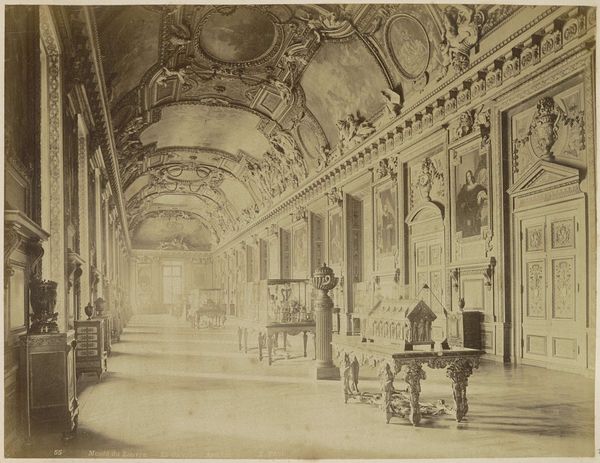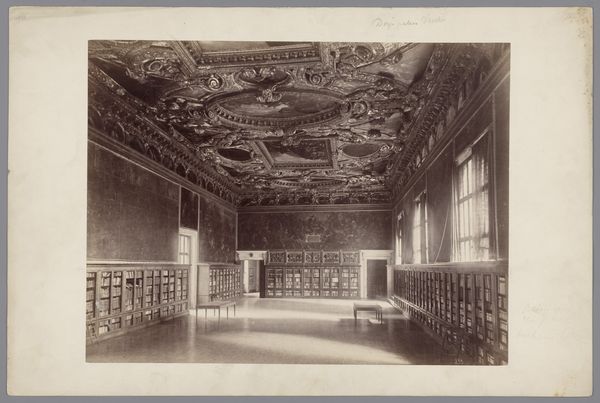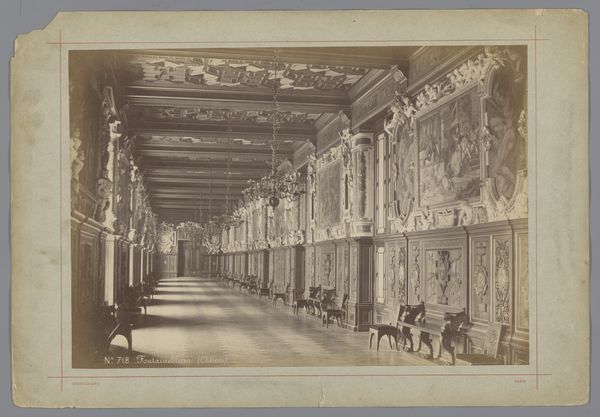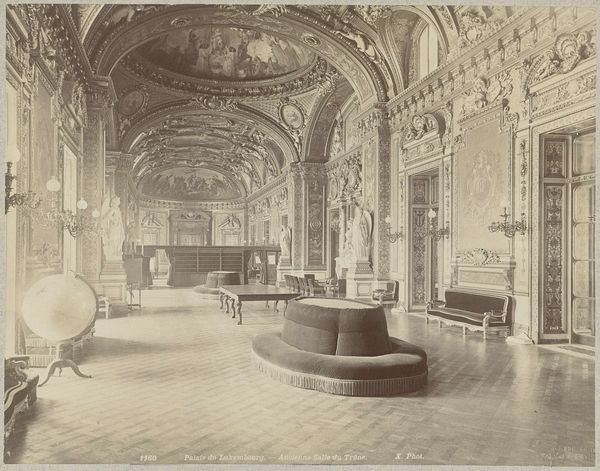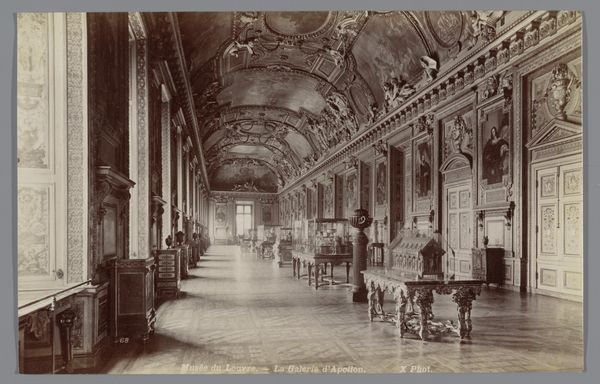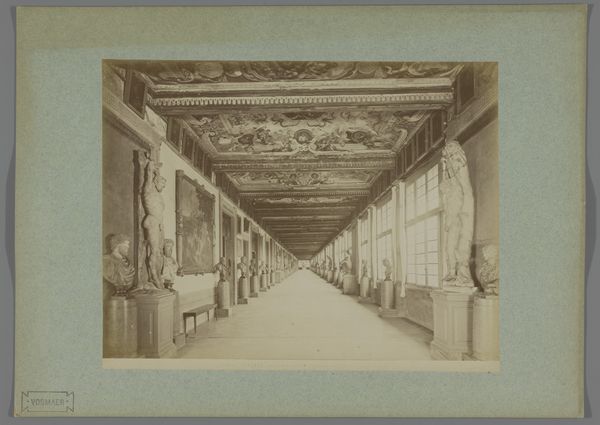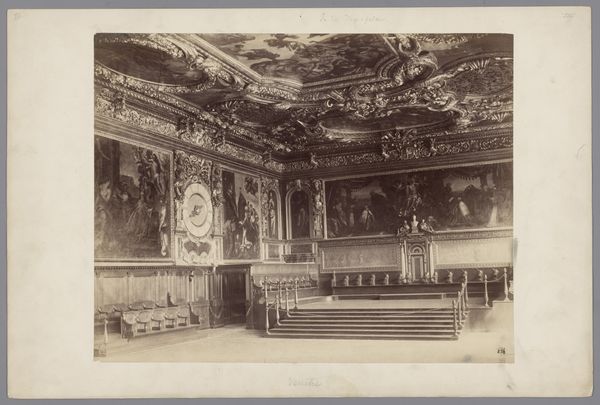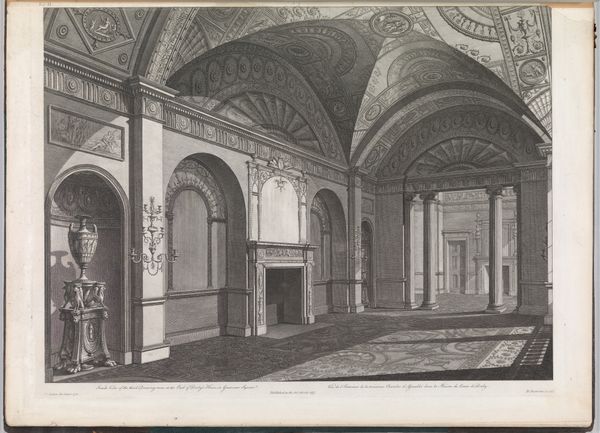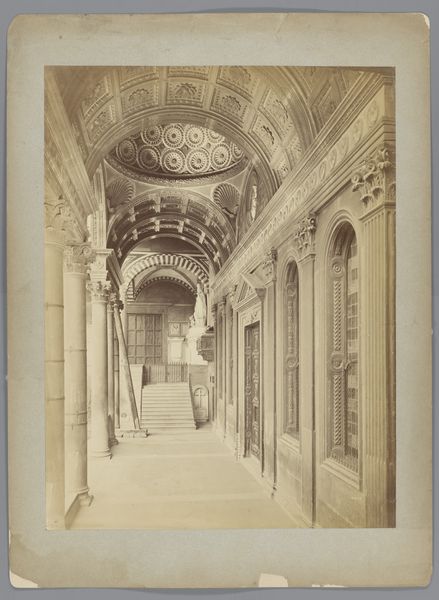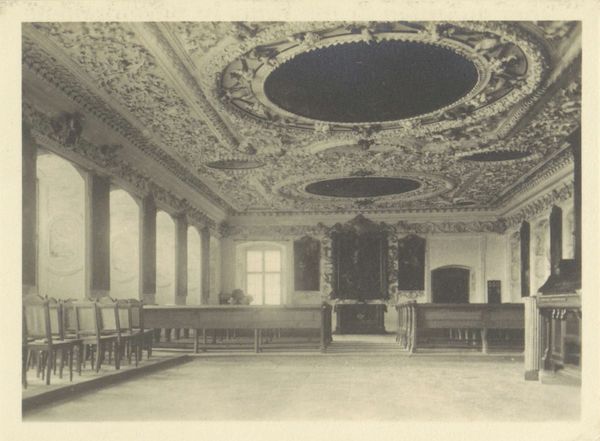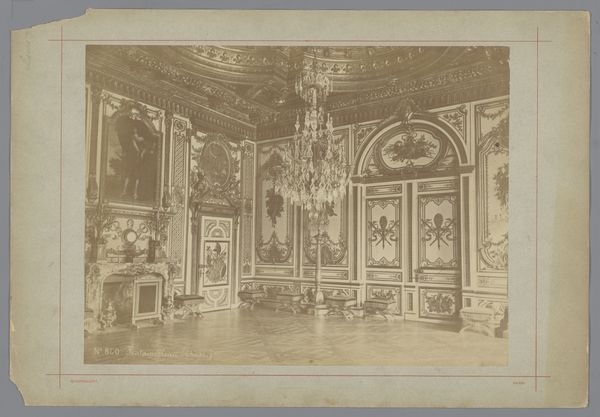
Dimensions: height 205 mm, width 263 mm, height 226 mm, width 300 mm
Copyright: Rijks Museum: Open Domain
Curator: Welcome. Before us, we have a photograph titled "Interieur van de Scuola di San Rocco te Venetië," taken sometime between 1851 and 1900 by James Anderson. It’s a gelatin silver print. Editor: It's striking how this grand interior is rendered in monochrome. There’s a certain flattening effect which almost abstracts the space. Curator: Indeed. Anderson's photograph presents not just a room but a cultural institution. The Scuola di San Rocco held significant civic power, and its opulent interior reflects that. The art within, mostly by Tintoretto, served as a visual statement of the confraternity’s prestige and pious duty during that period. Editor: Note how the linear perspective leads the eye to a focal point, but that focal point seems almost washed out, surrendering detail in favor of an overall atmospheric haze. Curator: That’s the interesting play between revelation and concealment characteristic of the medium, as photography matured at this period, becoming essential to disseminate artworks and heritage sites among burgeoning tourists. This shot turns the whole room into an artistic treasure displayed for eager consumption. Editor: I also notice the patterning—the geometric designs on the floor juxtaposed against the ornate decorations of the ceiling. It creates an interesting tension between order and exuberance, light and shadow. Curator: Absolutely, and those elaborate ceilings themselves depicted Biblical scenes and saints, offering narratives that further legitimized the Scuola’s social role in Venice at the time. Anderson captured not just a room but a container for those historical narratives. Editor: Ultimately, this work has left me reflecting on the ways that both space and time collapse in a photograph. This piece manages to hint at, if not entirely capture, the opulence of the Scuola Di San Rocco. Curator: Precisely. This image showcases photography's documentary role. Now we see it not only for its form, but for how it contributes to art's ongoing historical interpretation and accessibility.
Comments
No comments
Be the first to comment and join the conversation on the ultimate creative platform.
